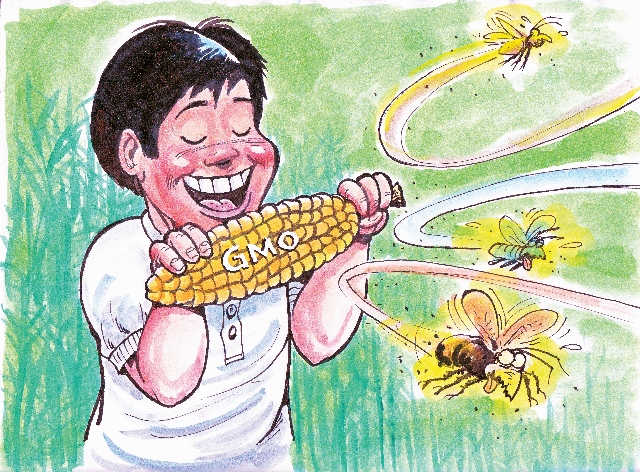Bt Toxin: A Story of the Pen and its Cap
| |
Explaining the Bt technology to a layman might be hard because you would need to define a lot of terms and explain a number of concepts. However, plant biotechnologist Dr. K.C. Bansal, made it easy using a pen and its cap.
The protein produced by Bt crops is generally called a Bt protoxin which can be represented by a pen without a cap. Once the pest consumes a part of a Bt plant, the Bt protoxin (pen) meets with a receptor inside the insect's gut which is represented by the cap of the pen. When the protoxin (pen) and the receptor (cap) bind together in alkaline gut condition, they become an activated toxin, ready to poison the gut of the pest such as cotton bollworm, the eggplant fruit and shoot borer, and the Asian and European corn borers.

When non-target organisms (like humans and animals) ingest a part of a Bt plant, the toxin will not be activated because the receptor (cap) is only present in the gut of target organisms. Thus, the Bt protoxin will not take its action and become a toxin. Therefore, Bt crops like maize, cotton, and eggplant are as safe as their conventional counterparts.
In 2019, Bt crops were planted to 23.6 million hectares, which is 12.4% of the global area of biotech crops. Bt crops were planted in India (11.9 million hectares), Brazil (3.9 million hectares), China (3.1 million hectares), Pakistan (2.5 million hectares), USA (1.2 million hectares), and less than 1 million hectares planted in Myanmar, South Africa, Sudan, Malawi, Nigeria, Spain, Portugal, Bangladesh, Eswatini, and Ethiopia.
For more information about Bt insect resistance technology, read ISAAA Pocket K No. 6.
| Newer Post | Archive | Older Post |
Science Speaks is ISAAA Inc.'s official blog. Weekly blog articles, authored by ISAAA writers, partners, and invited contributors, aim to help share, disseminate, and promote scientific knowledge and its vital role in achieving global agricultural sustainability and development. Your support to Science Speaks will help us achieve this goal. You can help us by donating as little as $10.

